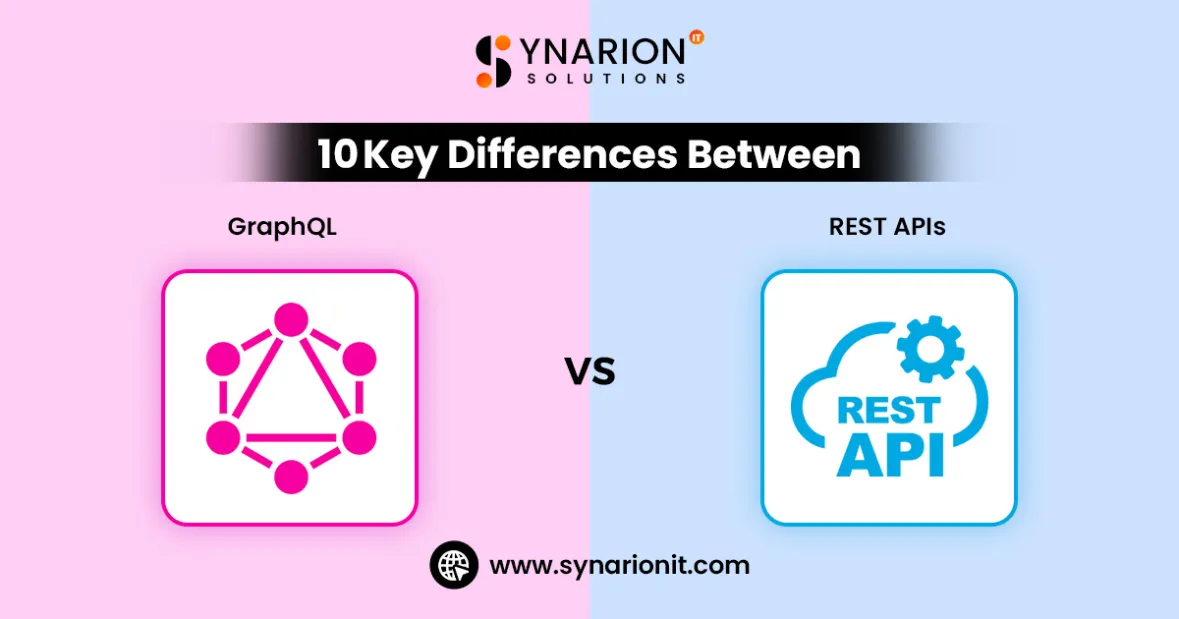In the world of web development, APIs (Application Programming Interfaces) play a crucial role in enabling communication between different software applications. Two of the most popular methods of building APIs are GraphQL and REST. While both allow for efficient data exchange between the client and server, they each have their own unique characteristics. In this article, we’ll explore the key differences between GraphQL and REST APIs, and how these differences impact the development process.
1. Data Fetching
- GraphQL: With GraphQL, clients can request exactly the data they need in a single request. The client can specify the fields and data structures required, reducing over-fetching and under-fetching.
- REST: In REST, clients often need to make multiple requests to different endpoints to fetch related data. This can lead to over-fetching (retrieving more data than necessary) or under-fetching (not getting enough data, requiring additional requests).
Impact on Custom API Development Solutions: GraphQL offers a more flexible and efficient way to retrieve data, which can be especially useful for applications with complex data relationships.
2. Data Structure and Endpoints
- GraphQL: GraphQL APIs have a single endpoint for all types of queries and mutations (data modifications). The schema defines the available types and operations.
- REST: REST APIs operate on multiple endpoints, where each endpoint represents a specific resource (e.g., /users, /posts, /comments), and different HTTP methods (GET, POST, PUT, DELETE) are used to perform operations.
3. Versioning
- GraphQL: GraphQL APIs don’t require versioning because clients can request only the data they need. As the schema evolves, clients can adjust their queries accordingly without breaking the API.
- REST: REST APIs often require versioning (e.g., /v1, /v2) as the API evolves to avoid breaking existing clients when new features or changes are introduced.
4. Request Complexity
- GraphQL: GraphQL queries can be more complex because they allow the client to request deeply nested data structures in a single query. This can sometimes lead to performance concerns, such as overloading the server.
- REST: REST is generally simpler in terms of request structure, but as mentioned earlier, it may require multiple requests to get all the necessary data.
5. Response Size
- GraphQL: The response size in GraphQL is minimal since the client defines exactly what data it needs. This helps avoid sending unnecessary data and makes the API more efficient.
- REST: REST APIs may return large payloads, especially if the client does not have control over the structure of the response, potentially causing inefficiency.
6. Error Handling
- GraphQL: In GraphQL, errors are returned as part of the response body, even if the query partially succeeds. This makes it easier to handle errors in a single response.
- REST: In REST, errors are typically returned as HTTP status codes, which means clients need to handle multiple types of errors separately based on status codes.
7. Caching
- GraphQL: Caching in GraphQL is more complex because each query can be unique. Standard HTTP caching doesn’t work as efficiently, and developers often need to implement custom caching mechanisms.
- REST: REST APIs are easier to cache using HTTP cache headers. Since each endpoint represents a specific resource, it’s simpler to implement standard caching strategies.
Impact on API Development Service Providers: REST APIs are easier to cache out-of-the-box using existing HTTP protocols, but GraphQL requires more thought and custom implementation for efficient caching.
8. Tooling and Ecosystem
- GraphQL: GraphQL has a robust ecosystem of tools like Apollo Server, Relay, and GraphiQL, making it easier for developers to build, test, and query APIs.
- REST: REST APIs benefit from a large number of established tools and libraries, including frameworks like Express, Flask, and Django.
9. Learning Curve
- GraphQL: GraphQL has a steeper learning curve due to its flexible query language and setup, which can be intimidating for new developers.
- REST: REST is simpler and easier to understand, making it a popular choice for developers just getting started with APIs.
Impact on Custom API Development Solutions: While REST might be easier for quick implementation, GraphQL’s flexibility can be a game-changer for more complex or dynamic projects, especially when scalability is a priority.
10. Security
- GraphQL: GraphQL’s flexibility and ability to expose many types of data through a single endpoint can create security concerns. Developers need to carefully control access to specific data types and queries.
- REST: REST’s multiple endpoints can be secured more easily, as access controls can be applied to individual resources.
Impact on API Development Service Providers: REST APIs often offer more straightforward security measures, but GraphQL requires careful planning to ensure secure access controls are in place.
Read More Article: API Integration Services in 2025: Empowering Businesses with Seamless Connectivity
Conclusion
Both GraphQL and REST have their strengths and weaknesses. Choosing between them depends on the complexity of your application and the specific needs of your business. If you’re working on a project with highly dynamic data needs, GraphQL may be the better choice due to its flexibility and efficiency in data fetching. On the other hand, for simpler projects with predictable and stable data structures, REST may be a better fit due to its simplicity and ease of use.
As an API Development Service Provider, understanding these differences is crucial to delivering the best possible Custom API Development Solutions tailored to your client’s requirements. Whether you choose GraphQL or REST, both offer significant advantages, and the right choice will ultimately depend on the project’s specific needs and long-term scalability goals.



